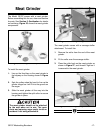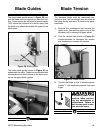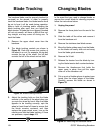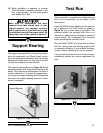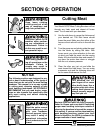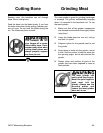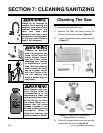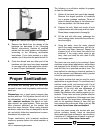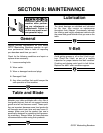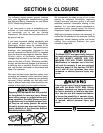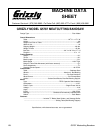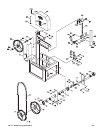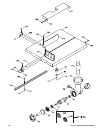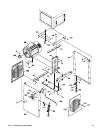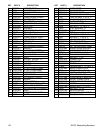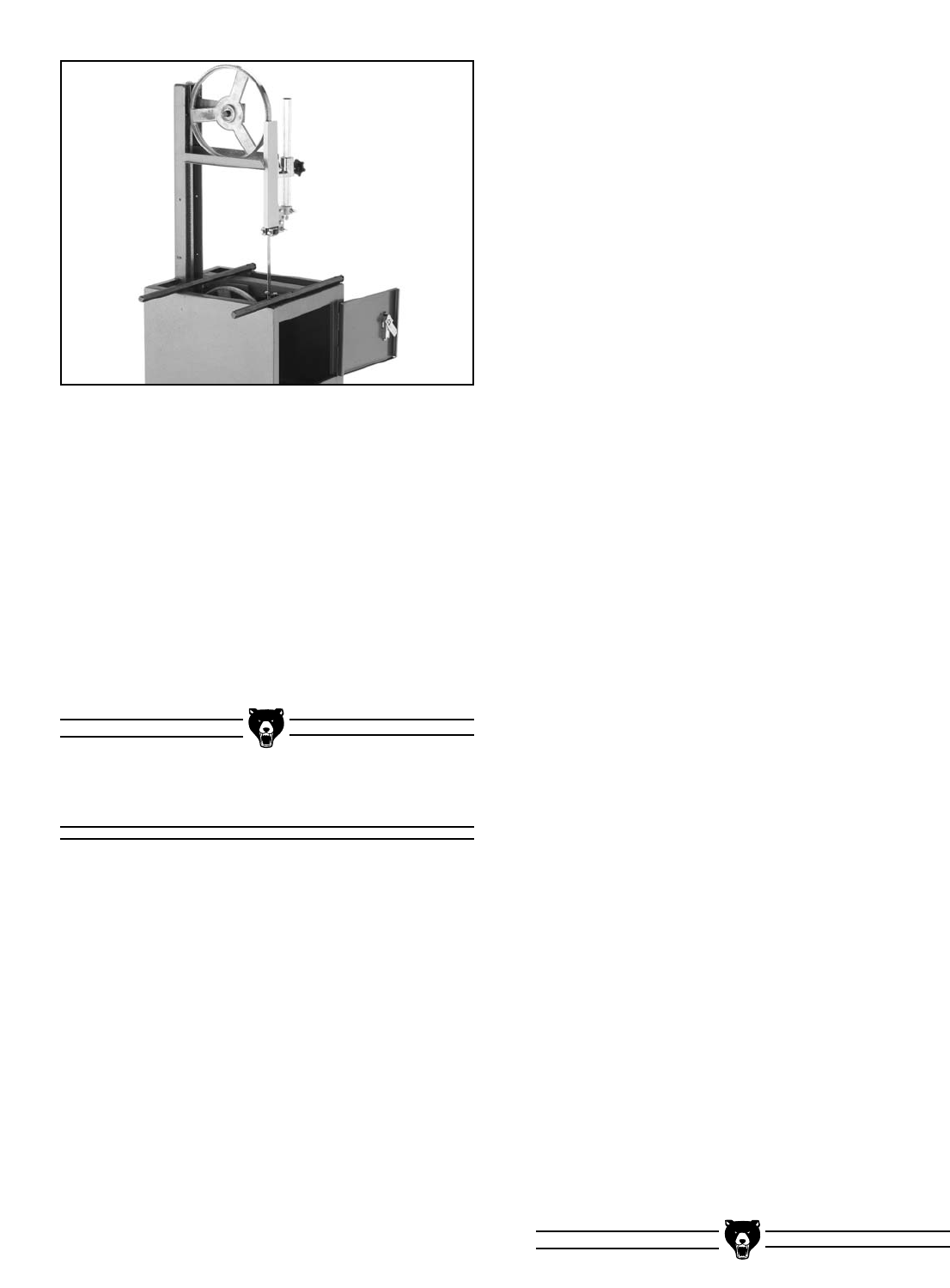
G5787 Meatcutting Bandsaw -25-
Proper Sanitization
All surfaces and working parts that have been
exposed to meat must be properly sanitized after
each use.
Dishwashers are a good option because they
sanitize with heat. For all pieces that will not fit in
the dishwasher, or if a dishwasher is not avail-
able, chemical sanitizers like bleach or iodo-
pher solution are good options. There are also
other chemical sanitizers on the market that
serve the same function. When using chemical
sanitizers, make sure they are designed to do the
job, and strictly follow the manufacturer’s recom-
mendations for proper use.
Proper sanitization with chemical sanitizers
requires a process before the actual sanitizer is
applied.
Figure 38. Cabinet door open for cleaning.
4. Remove the blade from the wheels of the
bandsaw (as discussed in the “Changing
Blades” instructions). Sanitize all removed
pieces from the meat grinder and bandsaw,
according to the following sanitization
instructions. If you have access to a dish-
washer, use it to sanitize the parts that will fit.
5. Clean the wheels and any other part of the
bandsaw unit that may have been exposed
to raw meat with a direct application sanitiz-
er (read “Proper Sanitization” instructions).
The following is an effective method to prepare
an item for sanitization:
1. Gather all the items that need to be cleaned.
Remove the largest particles of foodstuffs
into a proper garbage container. Rinse all
items to remove as many of the leftover par-
ticles as possible. Set the items aside.
2. Prepare the sink. Wash and scrub all sink
compartments with dish soap and hot water.
Rinse these compartments thoroughly.
3. Fill the sink with dish soap, submerge the
item in soapy water and scrub the entire sur-
face thoroughly.
4. Using hot water, rinse the newly cleaned
item in the empty compartment, until all visi-
ble suds have been removed. Repeat this
process for all of the items that need to be
sanitized. If the soapy water starts to get
hazy, drain and rinse the sink, then fill with
more soapy water.
The items are now ready to be sanitized. Some
sanitizers require direct applications, while others
are designed to be diluted in water and used to
soak the item for a specified period of time. The
best method for choosing a chemical sanitizer is
to do the research and determine which product
is best for your particular situation.
One simple sanitizer that can be used for many
applications is regular bleach. To use bleach as a
sanitizer, wash, scrub, and rinse your sink. For all
non-porous surfaces (includes all parts of this
bandsaw), fill the sink with one tablespoon of
bleach per gallon of cool water. Do not use
bleach that contains odor masking agents or sur-
factants. These have not been proven effective
for this type of sanitization. Submerge each item
for two minutes. For large items, submerge each
side for the specified amount of time until you
have covered the entire area. Allow to air dry. Do
not rinse these items after sanitization!
If your raw meat comes into contact with non-
porous surfaces (wood), clean as described
above and soak these surfaces for two minutes in
a solution of 3 tablespoons of bleach to one gal-
lon of cool water. Rinse these items well!



